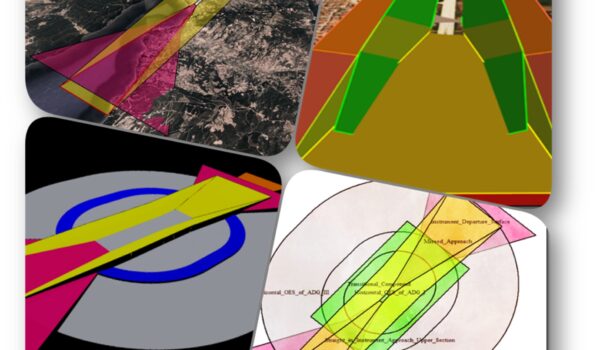December 26, 2023 – Semih YENİGÜL & Serdar BAYBURT

Our interest in the sky is not merely a curiosity but also an expression of humanity’s desire to push boundaries and explore its limits. Aviation not only satisfies this desire but also finds itself as an industry shaped by the winds of technology. However, it is not easy to adapt to this wave of change. Within the landscape of this paradigm shift, it is evident that environmental concerns and aviation safety-focused improvements are striving to integrate with evolving technology. As the aviation industry moves towards a new horizon, it is shaped and transformed by increasing demands and technological dynamics. In this context, it becomes important to investigate the trends supporting this transformation and the challenges that need to be addressed directly. The scene is one where environmental considerations and efforts to enhance aviation safety seamlessly merge with advancements in technology. The aviation industry is moving towards a new frontier, driven by rising demands and technological shifts. Understanding the trends fuelling this transformation and identifying the challenges that need to be addressed directly are of paramount importance in this context.
In today’s aviation era, improvements in aircraft and related systems, especially in navigation, communication, and surveillance setups, have prompted a re-evaluation of flight operations and procedures. Recognizing the need for a better balance between airside and ground, the International Civil Aviation Organization (ICAO) suggests revisiting the Obstacle Limitation Surface (OLS) outlined in Annex 14. ICAO emphasizes the development of simple guidelines to assess permissible values, aiming to create a more seamless connection between airspace and ground operations.
The OLS concept, developed with an innovative perspective, aims to strengthen aviation safety, optimize operational efficiency, and establish a foundation compatible with future aviation technologies. This approach is categorized into two main sections: Obstacle Free Surfaces (OFS) and Obstacle Evaluation Surfaces (OES). OFS primarily aims to provide an area where the aircraft can make corrective manoeuvres during take-off or landing. In other words, it assists in adjusting the aircraft’s route and enhancing safety. On the other hand, OES aims to provide an area for the aircraft to pass without hitting with obstacles during approach or take-off. This strategy is designed to minimize potential risks during flight, presenting a framework focused on ensuring safety. These two fundamental categories represent a significant transformation in aviation through the OLS concept. This approach not only enhances safety but also increases operational efficiency, aspiring to establish a secure and effective foundation for the future of the aviation sector.
So, how did the process leading to the concept change take shape?
Obstacle limitation surfaces (OLS) are imaginary surfaces that are defined to prevent buildings, trees, poles, and other obstacles in the vicinity of airports from endangering aircraft operations. These surfaces are designed according to standards set to ensure that aircraft can manoeuvre safely and encounter no threats during take-off or landing. They play a crucial role in designing safe flight procedures and enabling aircraft to fly protected from these obstacles.
These surfaces are a critical input in airport design because when accurately determined, they not only enhance operational efficiency but also support an environmentally conscious approach. Therefore, it is anticipated that the planned changes will be beneficial for aviation safety, operational efficiency, and environmental considerations.

So, why should new additional surfaces be needed? Did this evolutionary change trigger a series of challenges and changing needs that the existing OLS concept could not meet, or the developments in aircraft technology?
The current OLS concept was first used in the 1950s, almost 73 years ago! Some changes were made in the 1970s and 80s, but most of the surfaces remained unchanged. During this time, advancements in aircraft technologies, increased performance of navigation systems, and the development of new flight procedures have revealed that the existing OLS is inadequate to meet the needs of modern aircraft operations. Aviation safety and flight procedure design experts have recognized the need for updates in the OLS concept to adapt to developments and changing operational requirements over this period. They have taken the lead in organizing workshops and conferences. Our company, Haritaevi Aviation and Engineering Inc. sponsored the “ICAO/ACI Obstacle Limitation Surfaces Symposium” held from December 8-10, 2021. This symposium, attended by experts from different countries, provided an effective platform for sharing views and suggestions. Such events have encouraged discussions on the evolution of the OLS concept, emphasizing the necessity for updates.
ICAO’s new OLS concept should not only aim for regional but also international standard setting. Therefore, it is crucial to establish standards globally by fostering collaboration among aviation stakeholders, technology experts, regulatory authorities, and academia with a collective understanding of the industry. This new concept aims to create a framework covering general aviation safety, which is our shared heritage worldwide.
Haritaevi Aviation and Engineering Inc. conducted a pilot study to see the practical impacts of the concept and evaluate its results. In this study, detailed analyses of the old and new concept OLS designs over Turkey’s LTBH-Çanakkale Airport were examined, and the results were reported. Within this scope, AIP AD 2.10 Aerodrome Obstacles data and terrain obstacles were used to evaluate obstacle infringement analyses comparatively, and the impact on the new surfaces was analysed. Looking at the overall results, it can be stated that the new surfaces are more environmentally friendly and show regional flexibility. However, the finalization of certain critical technical values, based on results obtained through additional similar studies, is crucial for the development of international civil aviation. In this context, progressing on a common path by involving all stakeholders alongside public authorities will be valuable.
Perhaps the most important point is that these changes will affect not only aviation professionals, but also people outside of aviation. A more innovative OLS concept protects the civil society as well by providing safer and more efficient flight operations. A safer sky for everyone means a safer world.
ICAO’s new concept for obstacle limitation surfaces signals an exciting development in the aviation sector. The steps taken in line with modern technology, international standards, and public safety are crucial milestones that will shape the future of aviation. However, it’s important to remember that these developments shouldn’t just stay in theory. While theoretical progress is thrilling, it’s necessary to combine theory with practical implementation for real and effective evolution. Any theoretical change that doesn’t get put into practice will only exist on paper and be forgotten as a footnote in aviation’s evolutionary history. Therefore, merging theory with practice is vital for genuine and effective evolution in the aviation industry, advancing innovation and safety.
As technological advancements and digitization propel the aviation industry towards new horizons, they also bring along certain challenges. Trends like autonomous aviation, connected aircraft, and blockchain are being embraced, but parallel development in operational efficiency and aviation safety is essential. Addressing all these challenges and opportunities collectively and gracefully navigating the flawless dance between theory and practice would be beneficial for everyone in the industry. As Gandhi said, “The future depends on what you do today.” It’s crucial to be prepared for not just the dreams but also the digital transformation of realities related to the sky. Taking the right steps will ensure the future of the aviation industry is constructed in the most effective way possible.




